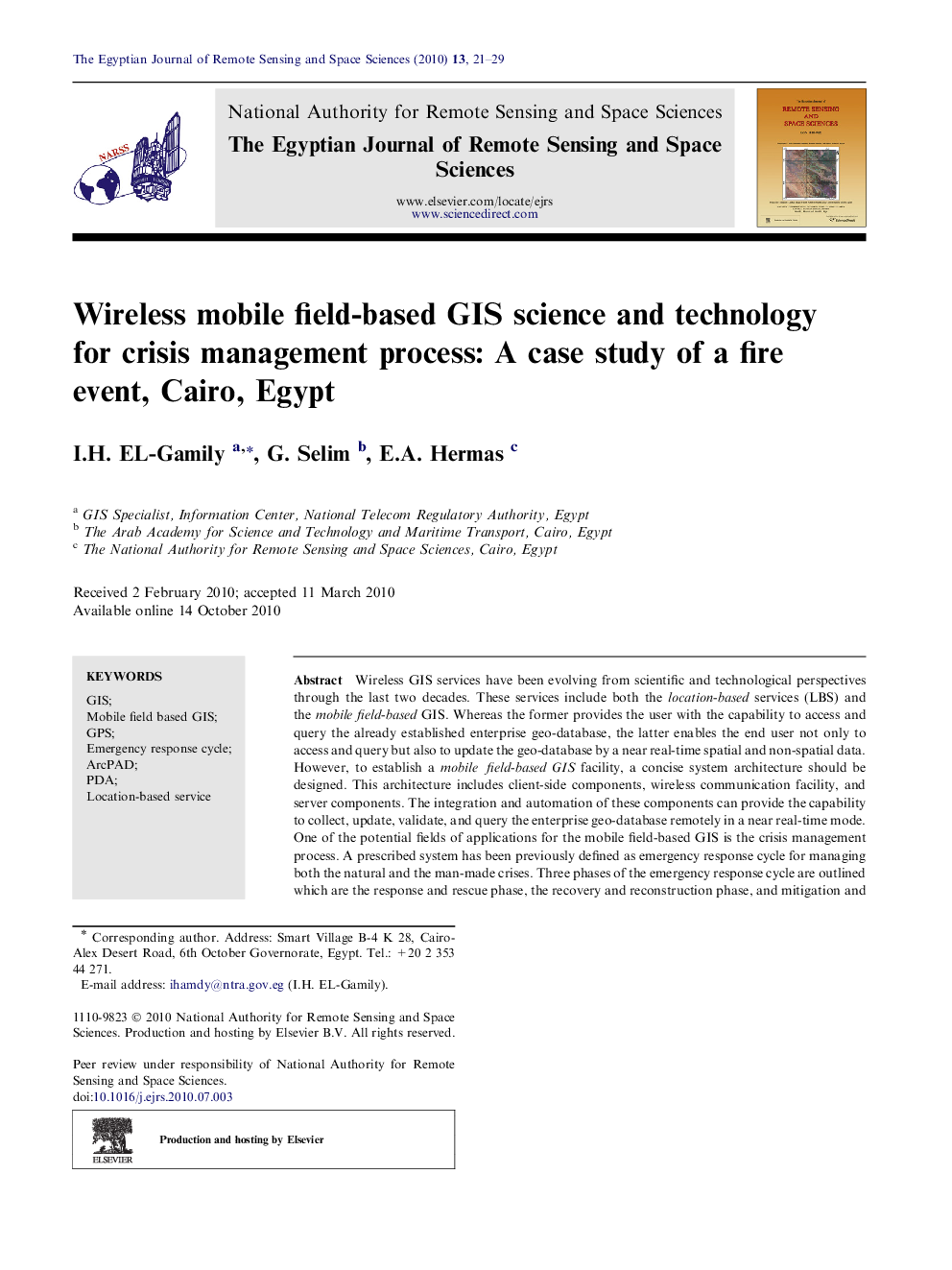| Article ID | Journal | Published Year | Pages | File Type |
|---|---|---|---|---|
| 4681412 | The Egyptian Journal of Remote Sensing and Space Science | 2010 | 9 Pages |
Wireless GIS services have been evolving from scientific and technological perspectives through the last two decades. These services include both the location-based services (LBS) and the mobile field-based GIS. Whereas the former provides the user with the capability to access and query the already established enterprise geo-database, the latter enables the end user not only to access and query but also to update the geo-database by a near real-time spatial and non-spatial data. However, to establish a mobile field-based GIS facility, a concise system architecture should be designed. This architecture includes client-side components, wireless communication facility, and server components. The integration and automation of these components can provide the capability to collect, update, validate, and query the enterprise geo-database remotely in a near real-time mode. One of the potential fields of applications for the mobile field-based GIS is the crisis management process. A prescribed system has been previously defined as emergency response cycle for managing both the natural and the man-made crises. Three phases of the emergency response cycle are outlined which are the response and rescue phase, the recovery and reconstruction phase, and mitigation and preparedness phase. In each phase, various tasks are undertaken based on the type of the event. Selective tasks of the response and the rescue phase of the fire event occurred in the Sheraton Exchange Center have been chosen to check the validity of using the mobile field-based GIS for enhancing the performance of these tasks. These tasks are path selection and quick damage estimates.
